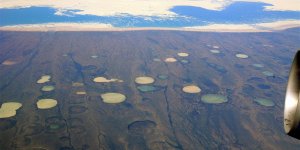| News / World News |
Galapagos sea life study highlights importance of biodiversity in the face of climate change
As the world's climate continues to change, biologically diverse communities may be most capable of adapting to environmental challenges.

Scientists find species mobility, biodiversity may increase resilience to environmental challenges. Photo: Witman Lab
New research by Brown University biologists studying the effects of wave turbulence on sea creatures paints a clearer picture of why biologically diverse communities are more likely to thrive: A more diverse community is more resistant to rapidly changing environmental conditions.
Jon Witman, a biologist at Brown and member of the research team, said that the results "will help us understand how whole marine communities -- not just single components -- will be affected by increasing environmental stress in this era of climate change."
The study also emphasized the impact of species' mobility on their resilience.
Working in the Galapagos Islands, the biologists studied wave motions, conducted underwater experiments and used marine life censuses to evaluate the effects of wave turbulence on sea urchins and fish feeding on algae.
Highly mobile foragers appear to favor turbulent areas because these locations contain particularly abundant food sources. The study found that wave turbulence enhances algae growth, likely because the motion of the water promotes the delivery of nutrients.
The researchers modeled the effects of biodiversity by analyzing wave strength in conjunction with the foraging abilities of various fish. The scientists predicted the extent to which foraging rates would drop if different numbers of species disappeared from the ecosystem. They found that biodiversity was most important for ecosystems in rapidly changing areas.
"Biodiversity allows ecosystems to maintain services when the environment changes," says Mike Sieracki, a program director in NSF's Division of Ocean Sciences. (National Science Foundation)
YOU MAY ALSO LIKE





